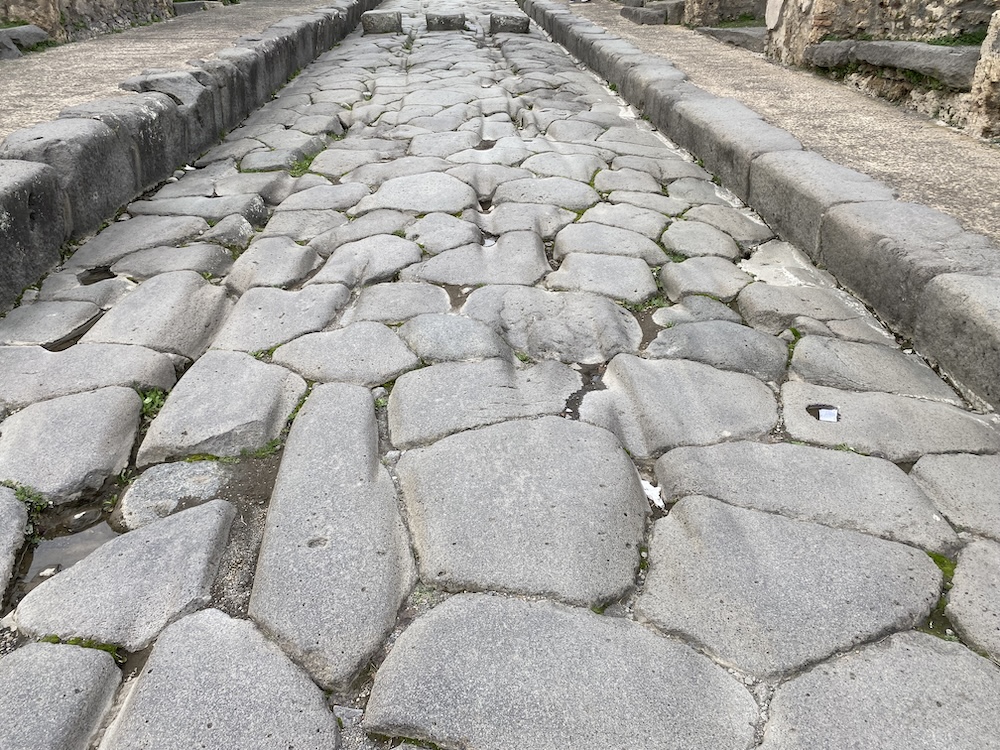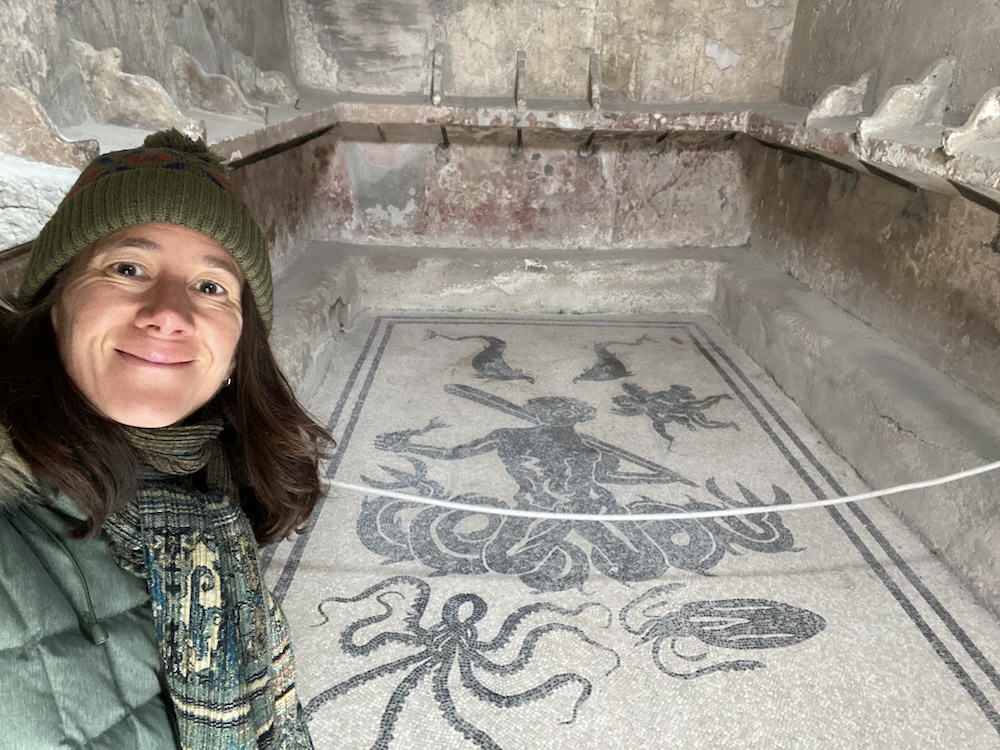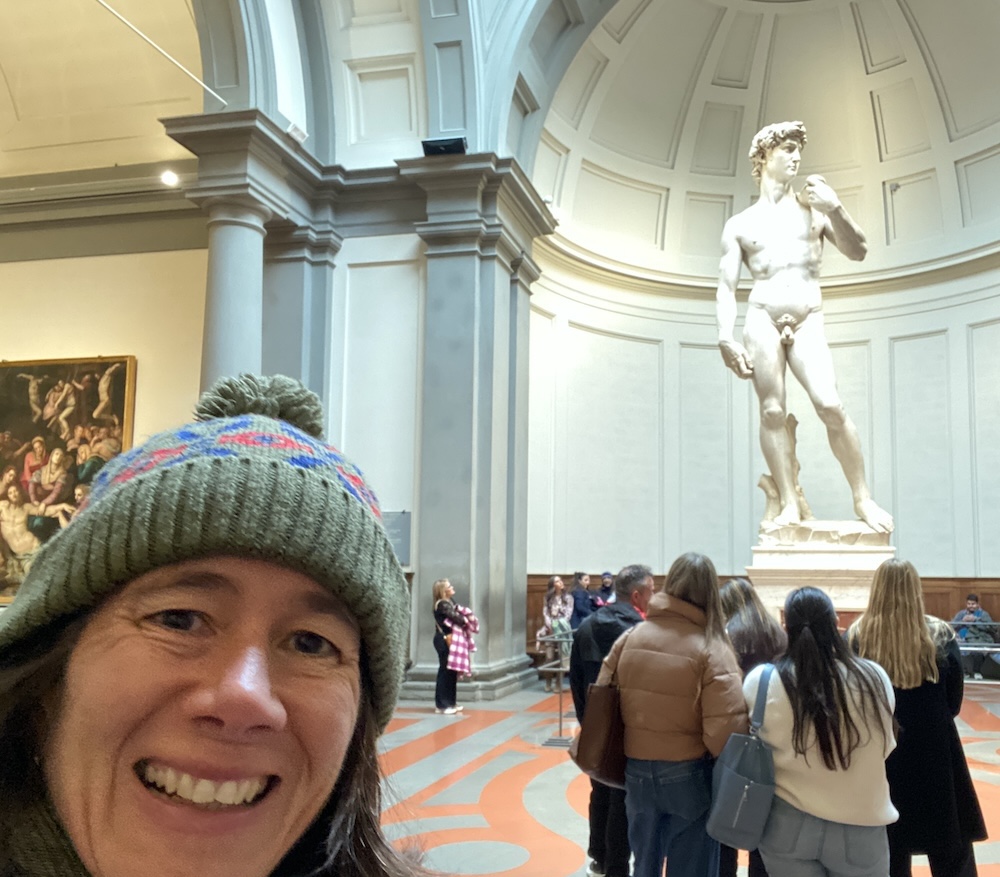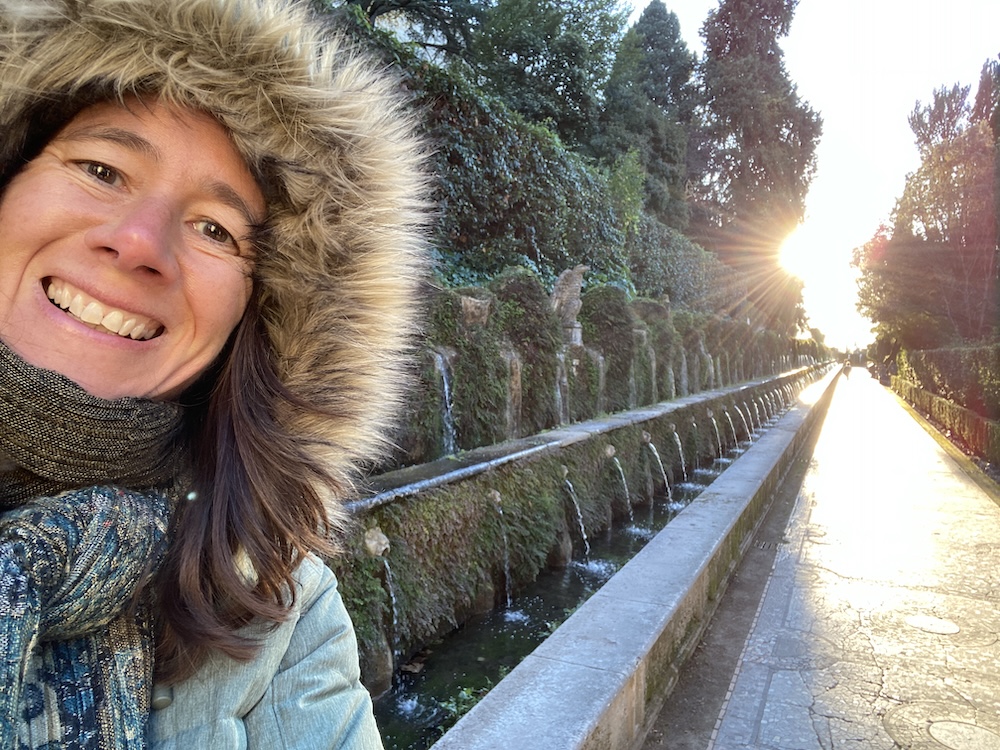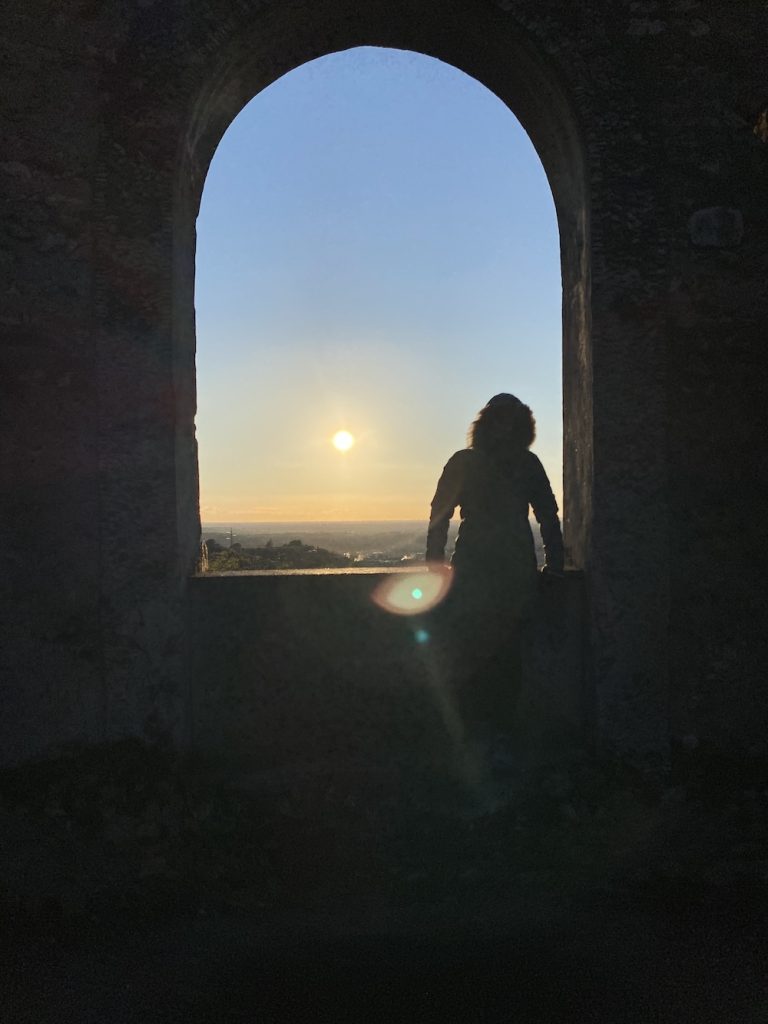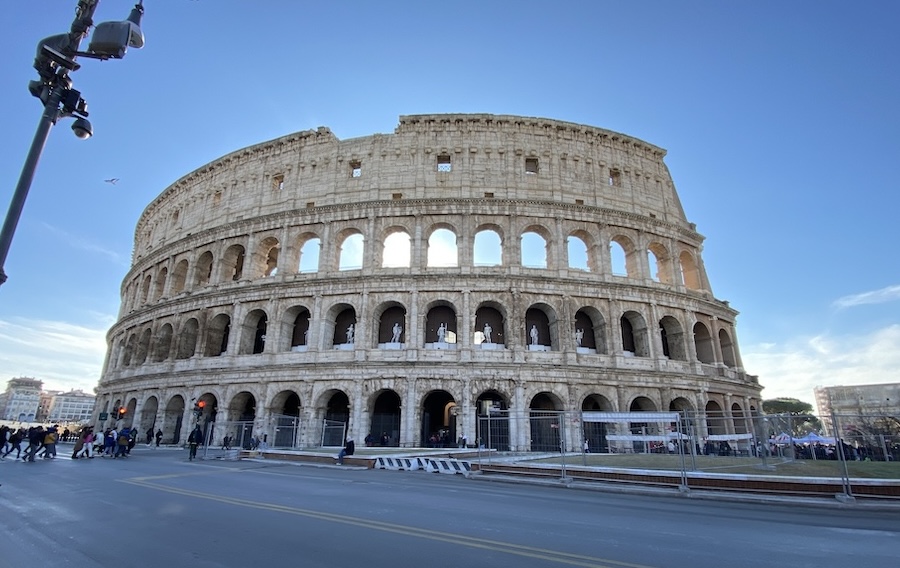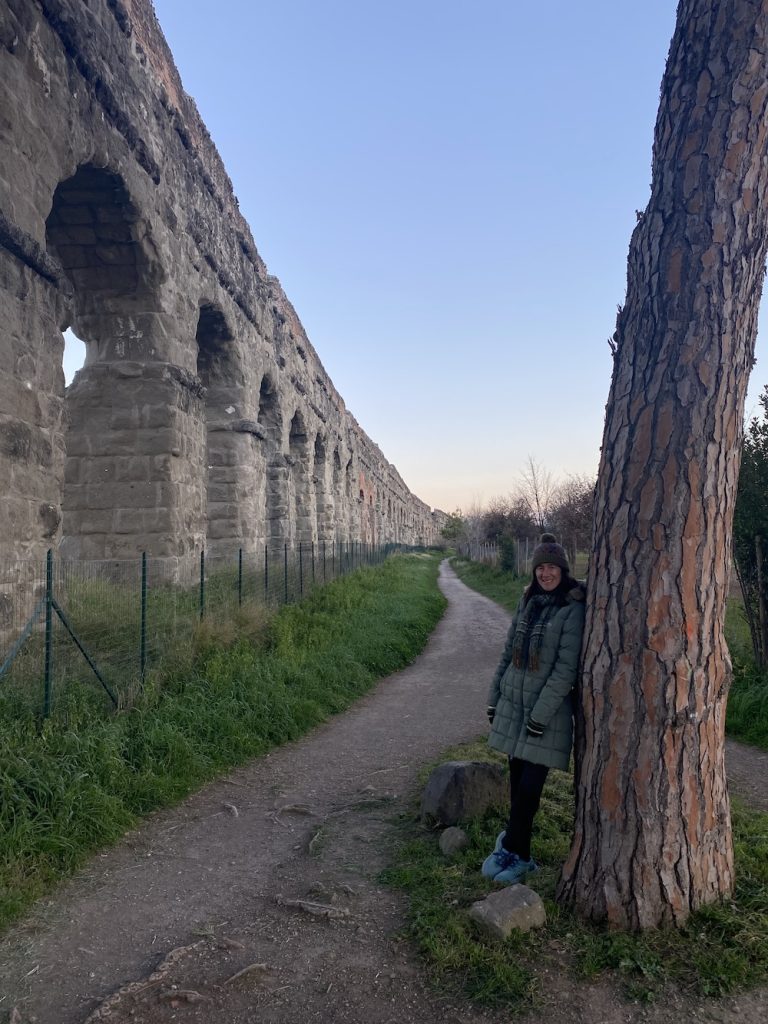History is all around us. Wherever we walk, someone has walked before. After all, Homo sapiens have been on Earth for approximately 300,000 years, so that’s a lot of feet covering a lot of ground. And I love wondering who might have walked where I now walk, what they were doing at the time, what was going on in their lives, how they were feeling and what they were thinking. Wondering such things also helps me to write…
Since the past is such a big part of my next novel, I recently popped over to Italy(!) to experience walking through the centuries.
Starting with the 8th century BCE site of Pompeii and the 7th century BCE site of Herculaneum, I couldn’t stop walking along all the wagon tracks in the streets. How many wagons would have had to pass to form such deep impressions in the stone? Who owned those wagons, what did they carry and why – what aspirations and goals had they strived to achieve and did they ever achieve them?
I was also fascinated by the thermopoliums – fast food eateries where people went when they were just as busy as they are today, and in need of a quick and easy meal from a street vendor.
The resonance that this human behaviour has across the epochs reminded me to think about food during my latest edits for my upcoming release: were my characters getting enough to eat? When writing stories with such action, adventure, and romance, it’s so easy to forget that characters still need to eat and drink!
Of course the resonance of storytelling over the epochs inspired me too, present in all the mosaics and statues representing Ancient Roman myths and legends.
Oh, the importance of stories!
Take Michelangelo’s Statue of David, for example, currently housed in the 14th century birthplace of the Italian Renaissance, Florence. While the statue’s anatomical interpretations are still debated today, the story behind its creation (of David defeating the mighty Goliath with just a sling shot) remains a constant source of inspiration for authors everywhere – how adversity can incite ordinary people to become extraordinary.
Next up was the medieval town of Tivoli, and the famous Villa d’Este, which was recently the film set for the gardens of Mount Olympus in the Kaos Netflix series.
Yes, of course I walked where famous actors had walked before me, but I also formed a connection with the villa’s architect Pirro Ligorio.
There’s a poem, The Tuft of Flowers by Robert Frost, in which a persona observes a field, recently mowed everywhere apart from a tall tuft of flowers beside a brook. The persona admires those flowers, then marvels at how the experience prompts them to feel connected with whoever mowed the field – a complete stranger yet a kindred spirit, given they must have also admired the flowers in order to spare them.
I felt the same at Villa d’Este, where the beauty of water is so championed (with 875 metres of water courses, 64 waterfalls and cascades, 51 fountains and nymphaeums, 364 jets of water and 398 spurts!), and sunsets are so perfectly framed that someone, me, could walk there centuries later and feel the same sense of awe.
Climbing to the top of the Leaning Tower of Pisa also inspired me to connect with past architects – such a beautiful sea of red terracotta roof tiles below! They seemed to stretch all the way to the mountains! Clearly others have admired the town too, given all the zoning regulations, archaeological restrictions, and the buffer zone that protects the site and preserves its Outstanding Universal Value.
Again, such existential experiences influenced my recent book edits, lending authenticity to my character during an existential moment of her own – she’s overwhelmed by the adversity she’s facing, yet time still passes. I wonder if you’ll know which scene I mean when you read it?
Then of course there was Rome, where historic remains sit on every street corner…
…and where you can even meander around an entire park of ancient aqueducts.
The past is indeed everywhere! Evidence of what was and how things have changed.
Beneath Rome’s modern city, there could be more evidence to uncover too! Anyone who reads my next release, When Dark Waters Burn, will surely understand the significance of that for the book – history is all around my characters. Because history is all around us, whether we’re in Italy, or anywhere else.







